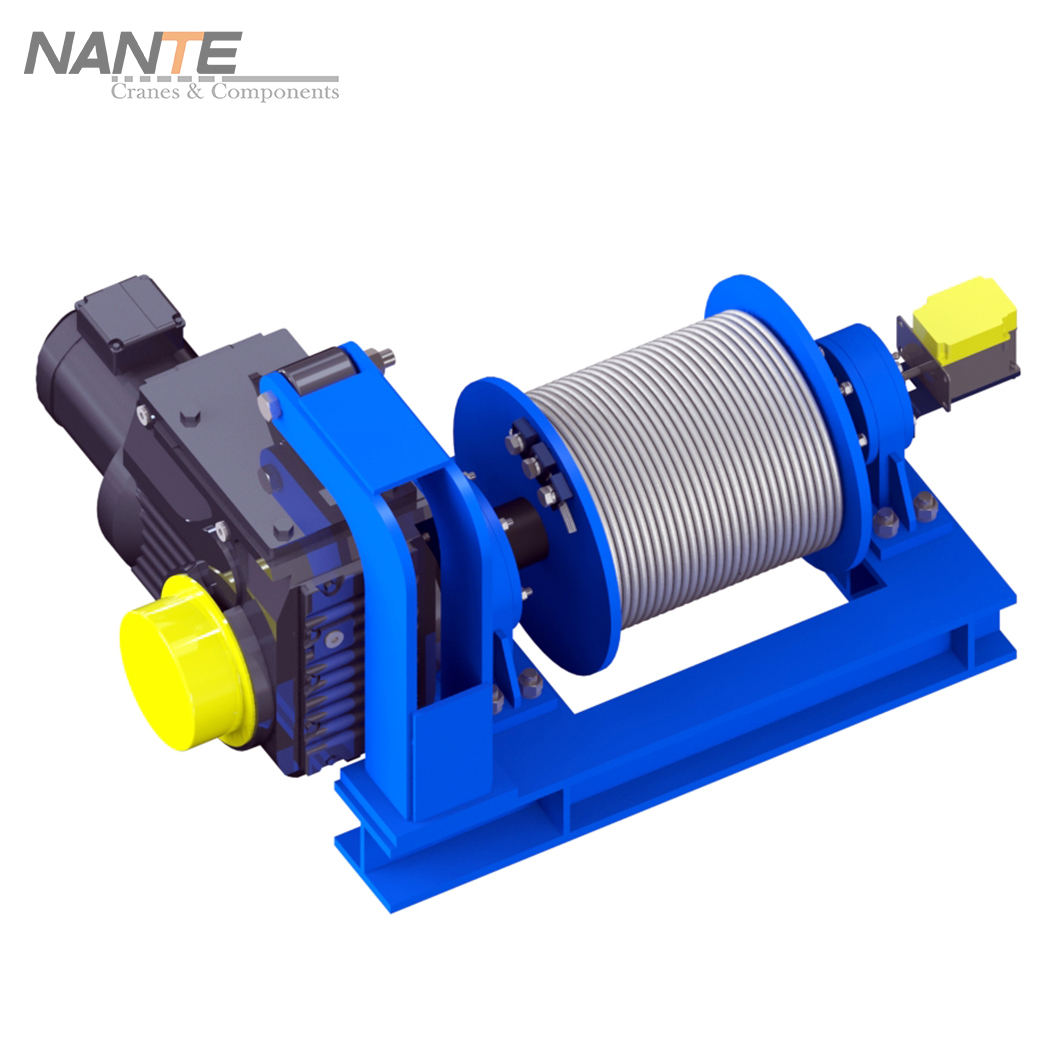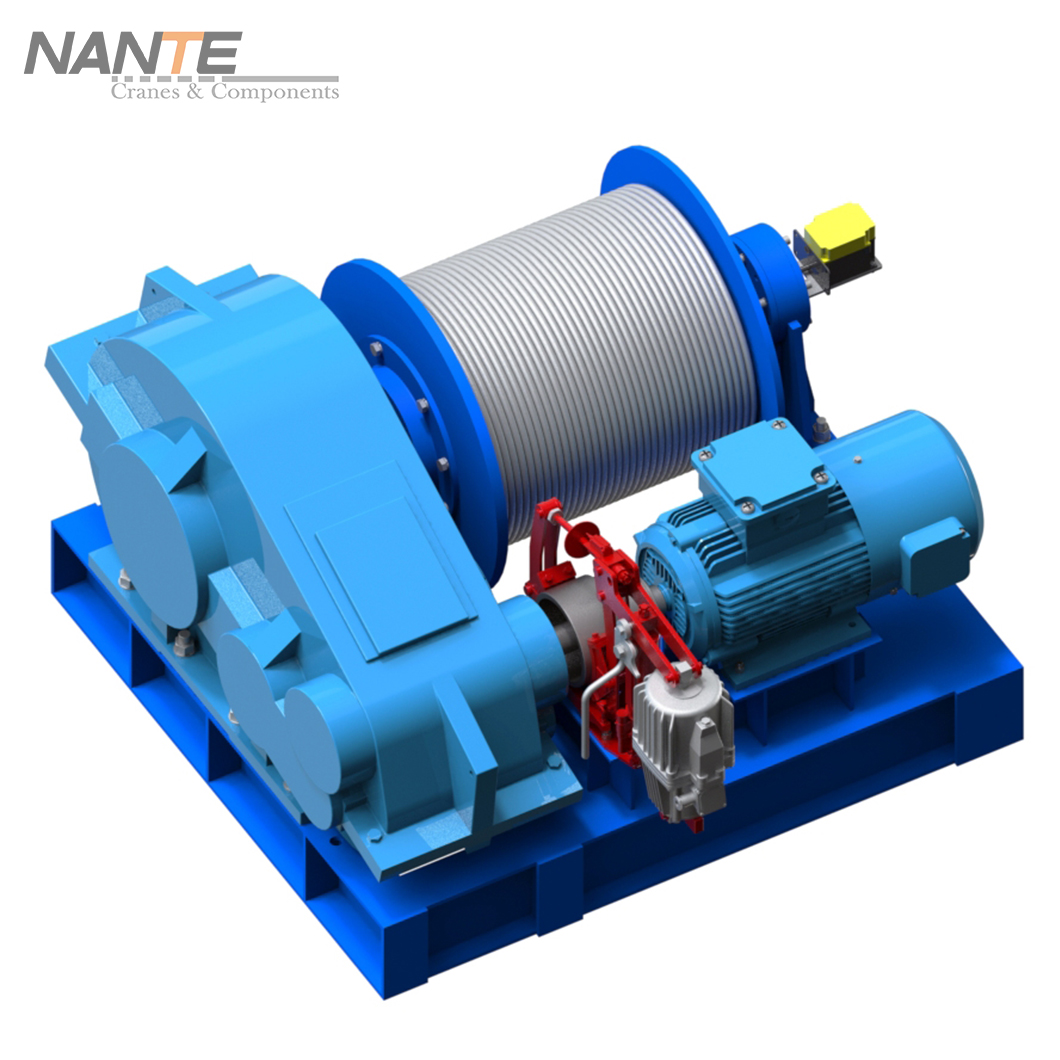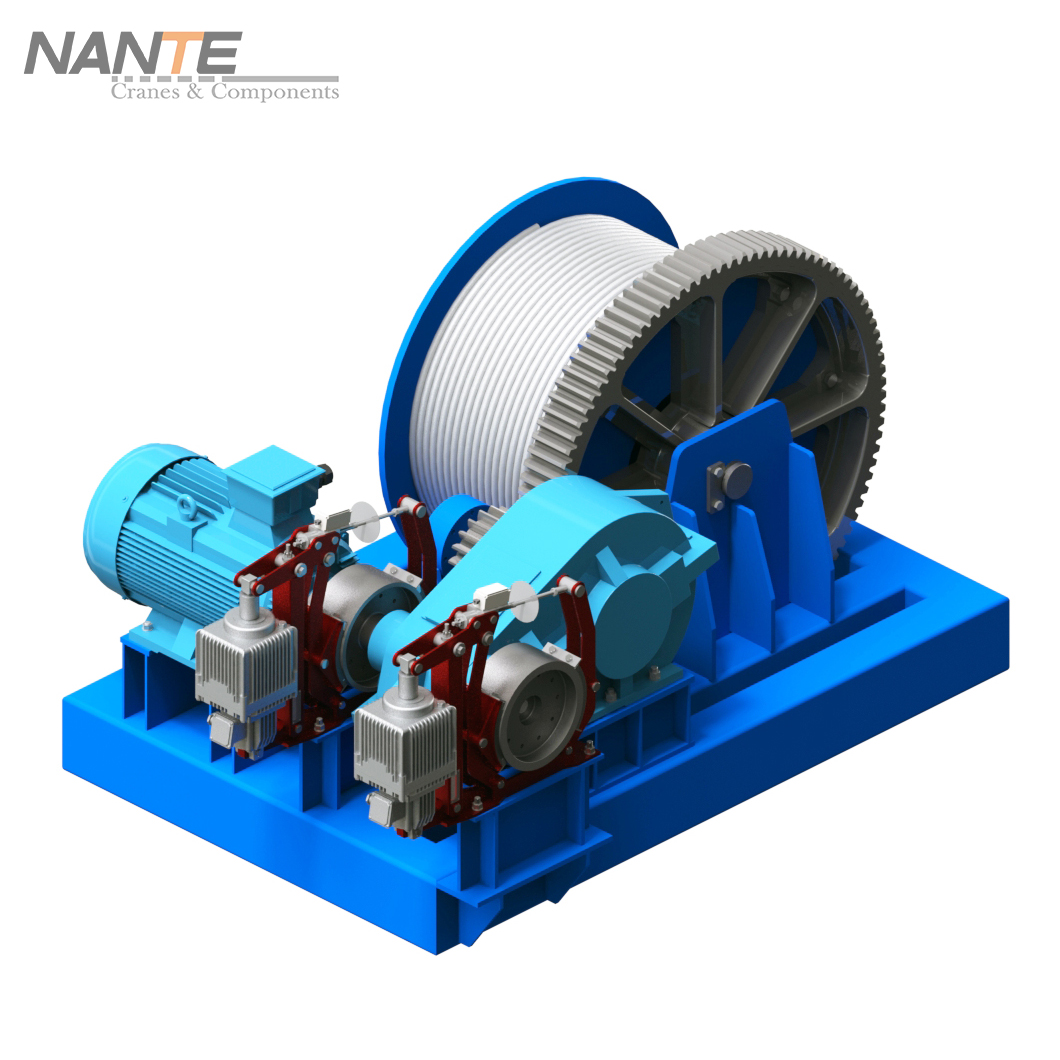What Is a Construction Pulling Winch?
Date: 2024-02-13 Share:
What Is a Construction Pulling Winch?
A construction winch is a mechanical device used to transport heavy loads on a construction site. It adopts a winch mechanism to lift and raise or lower the goods along the vertical direction using a rope. Construction winch has a wide range of applications in the construction field, which can be used to transport steel, masonry, sand and other construction materials, improve work efficiency and reduce the cost of manpower and material resources.

A typical construction winch consists of the following major components:
Electric motor: used to provide power to drive the winch mechanism to work
Rope: as the carrier of the lifting load, attached to the drum
Reel: contains the wire rope, through the drive of the motor to achieve the winding and unwinding of the wire rope
Guide sheave: Used to guide the movement direction of the wire rope to ensure the stability of the winch.
Shell: protects the internal mechanical parts of the winch and ensures the safety of the operator.
Controller: Used to operate the start-stop, lift and other functions of the winch.
The working principle of the construction winch can be summarized in the following steps:
The motor is started by the controller, and the motor drives the drum to rotate.
The wire rope is released or withdrawn, and the weight is lifted or lowered.
Control the lifting and lowering speed by adjusting the rotating speed of the motor.
The guide wheel plays the role of guiding the movement of the wire rope to ensure the stability of the winch.
When the weight reaches the target position, the motor is stopped by the controller.
Construction winches are widely used in the following scenes:
Construction site: used for transporting and lifting construction materials, improving work efficiency
Bridge construction: for lifting steel girders, cantilever beams and other heavy components.
High-rise building maintenance: for transporting maintenance workers and tools.
Mining: used for transporting ore and other heavy objects.
Compared with the traditional manpower lifting, the construction winch has the following advantages:
Improve work efficiency and reduce the cost of manpower and material resources
Automated operation can be realized, reducing the risk of personnel injury
Can work in a narrow space with a small footprint.

Nante’s Construction Pulling Winch
Nante’s construction pulling winch can be equipped with different types of gearboxes to meet specific requirements and applications. The choice of gearbox type depends on factors such as the load capacity, speed reduction ratio, efficiency, and durability needed for the particular job.
Here are some brief descriptions of the gearbox types suitable for Nante:
KA type gearbox: This type of gearbox is typically used for heavy-duty applications where high torque and load capacity are required. It’s designed to handle high loads and is often used in construction equipment, mining machinery, and other heavy-duty industries.
Hardened industrial gearbox: This gearbox features hardened teeth on the gears, which provides increased durability and resistance to wear. It’s suitable for applications that require high precision and long-term stability, such as in manufacturing and processing equipment.
ZQ metering box with soft tooth surface: This gearbox is characterized by its soft tooth surface, which helps reduce noise and vibration during operation. It’s commonly used in applications where precision and smooth operation are important, such as in instrumentation and precision machinery.
Planetary metering box: This type of gearbox uses a planetary gear arrangement, which provides a high reduction ratio and smooth torque transmission. It’s often used in applications that require precise control of speed and torque, such as in robotics and automation systems.
When selecting a gearbox for a construction pulling winch, it’s important to consider the specific requirements of the job, including the weight and size of the load, the working environment, and the required speed and torque. The chosen gearbox should be able to handle the demands of the application while also providing reliable and efficient performance.

Construction pulling winches can be equipped with various brake systems depending on the specific requirements of the application. The choice of the brake system is critical to ensure safe and reliable operation of the winch.
Here are some common brake systems that can be used with construction pulling winches:
Electromagnetic Brake: This type of brake uses electromagnetic force to apply braking action. It’s commonly used in electric-powered winches because it provides fast and reliable braking. Electromagnetic brakes are actuated by an electric current, which makes them easy to control and maintain.
Hydraulic Brake: Hydraulic brakes use pressurized fluid to apply braking force. They are often used in larger and heavier winches where more braking power is required. Hydraulic brakes provide smooth and consistent braking action, and they can be actuated by hydraulic pumps or other fluid power sources.
Disc Brake: Disc brakes are a type of mechanical brake that uses friction between a brake pad and a rotating disc to generate braking force. They are commonly used in winches that require high-performance braking, such as those used in heavy-duty construction equipment. Disc brakes are known for their durability and ability to handle high temperatures.
Combination Brake System: In some cases, a combination of different brake systems may be used to provide redundant braking or to enhance braking performance. For example, an electromagnetic brake may be used as the primary brake, while a disc brake or hydraulic brake provides additional braking power in case of emergency.
When selecting a brake system for a construction pulling winch, it’s important to consider factors such as the size and weight of the load, the working environment, and the required braking performance. Additionally, it’s crucial to ensure that the brake system is properly maintained and inspected regularly to ensure its reliability and safety.
 English
English






